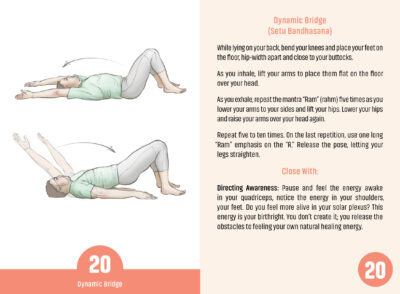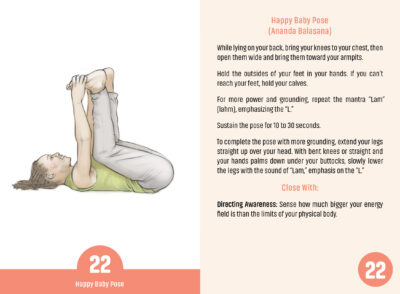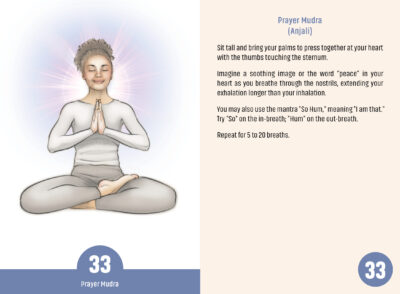Yoga Interventions to Shift Depression
Along with the pandemic, mood disorders have reached epidemic proportions. Depression is four times more prevalent than it was before the pandemic when 40 million Americans reported suffering from anxiety and depression. This is affecting young adults at even higher levels and deaths from drug overdose and suicide in that population are skyrocketing.
There are simple practices from the yoga tradition that can be effective in bringing us into balance and many don’t require a yoga mat or previous yoga experience. When I founded LifeForce Yoga in 2004, it was to make these practices accessible for those without a yoga background who might not find their way to a yoga studio or who might not have access to sufficient mental health services. You don’t have to adhere to any belief system or look a certain way to try them. The practices can complement psychotherapy and other forms of natural healing. They can be brief interventions to self-regulate and self-soothe or they can be integrated into an established or emerging practice.
When depression settles in, we might not recognize it. We may feel it in our bodies as a state of lethargy. Since the pandemic, mental health professionals have begun calling this state “languishing.” A simple practice of two to three minutes can shift the mood and the energy level. The body chemistry changes, those feel-good hormones oxytocin and prolactin increase, and there is more oxygen available for the brain. Studies even show that our telomeres lengthen, which is an excellent way to feel younger as we age.
In LifeForce Yoga, we practice universal (non-devotional) mantras in postures and as a portal into seated meditation. Studies have indicated that this protocol is effective for treating mood disorders, especially depression. When you add a tone to a pose or a meditation practice, you are enhancing your focus and decreasing distracting thoughts. The vibratory quality of the sound, combined with a hand gesture (mudra) or visual image (bhavana) in meditation, may have added benefits in elevating your mood, by activating ventral vagal activity that brings a sense of calm, alert presence.
Sounds True asked me to gather some of these practices in the new card deck, “Yoga for Your Mood: 52 Ways to Shift Depression and Anxiety,” which has just been released. The cards are grouped and color coded into energizing practices, calming practices and balancing practices, and they can be used in three ways.
One: Take one card from the red group for a quick intervention to lift your mood, or select one from the blue group to calm.
Two: If you feel stuck, take one card to meet your current mood, then choose another to bring you in the direction you would like to go. For example, if you feel too depressed to get off the couch, start there – with a blue card. Once you’ve met your mood, you may feel more focused and ready to try a red card. You can sustain the balance you now feel with a green card.
Three: Choose a series of cards to create your own daily practice.
Here’s an example:
Card 20 | Dynamic Bridge
Card 22 | Happy Baby Pose
Card 33 | Prayer Mudra
If you would like more information about the card deck, my books, and other resources for meeting and managing your mood, look here, and here.
Subscribe for free practices and resources: https://mailchi.mp/b8377f0fd2ad/86optin
And, connect on Social:
INSTAGRAM: https://www.instagram.com/amylifeforceyoga/
FACEBOOK: https://www.facebook.com/amyweintraubauthor
YOUTUBE https://www.youtube.com/c/AmyWeintraubAuthor
TWITTER: https://twitter.com/AmyWeintraub2
GOODREADS: https://www.goodreads.com/author/show/160031.Amy_Weintraub









